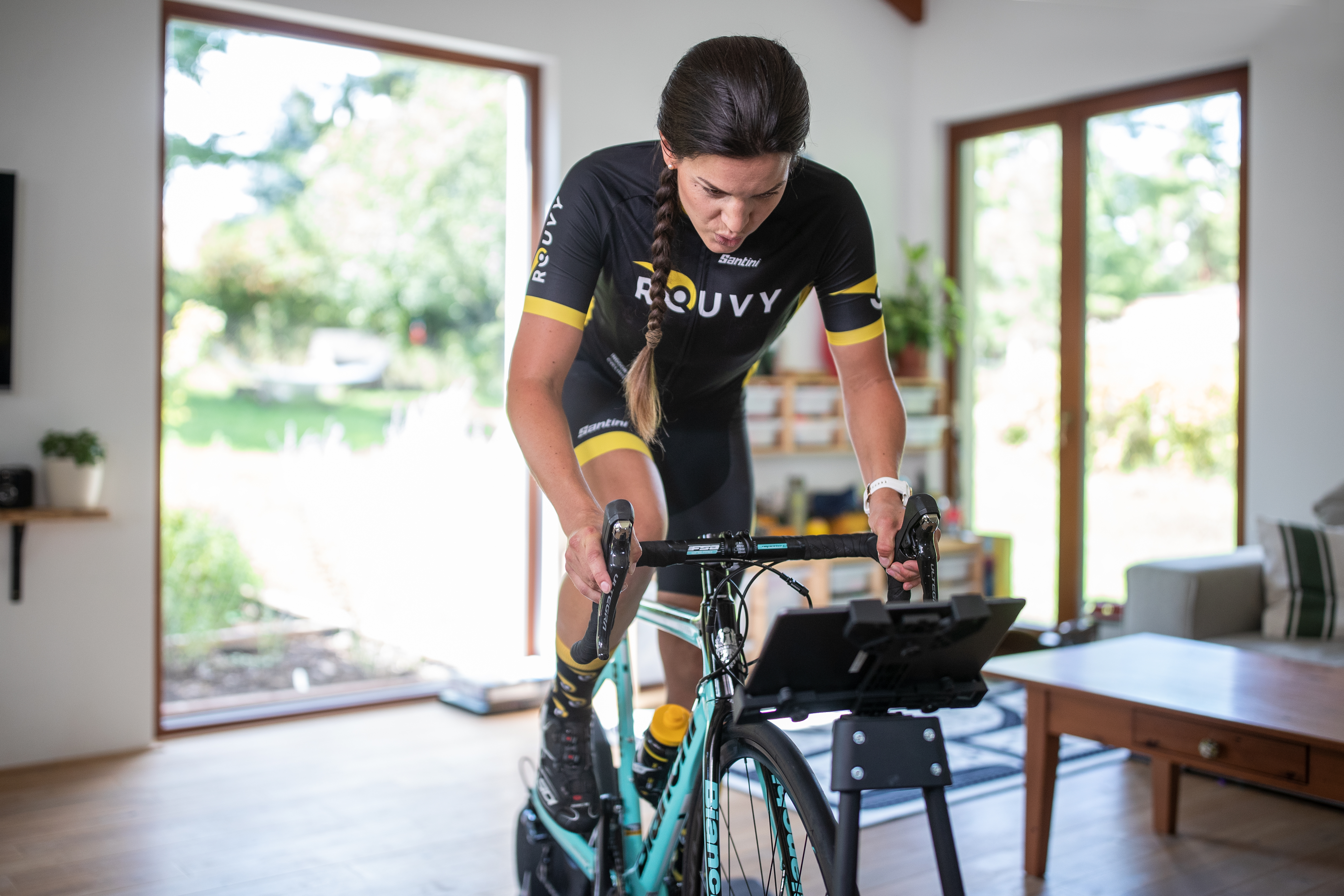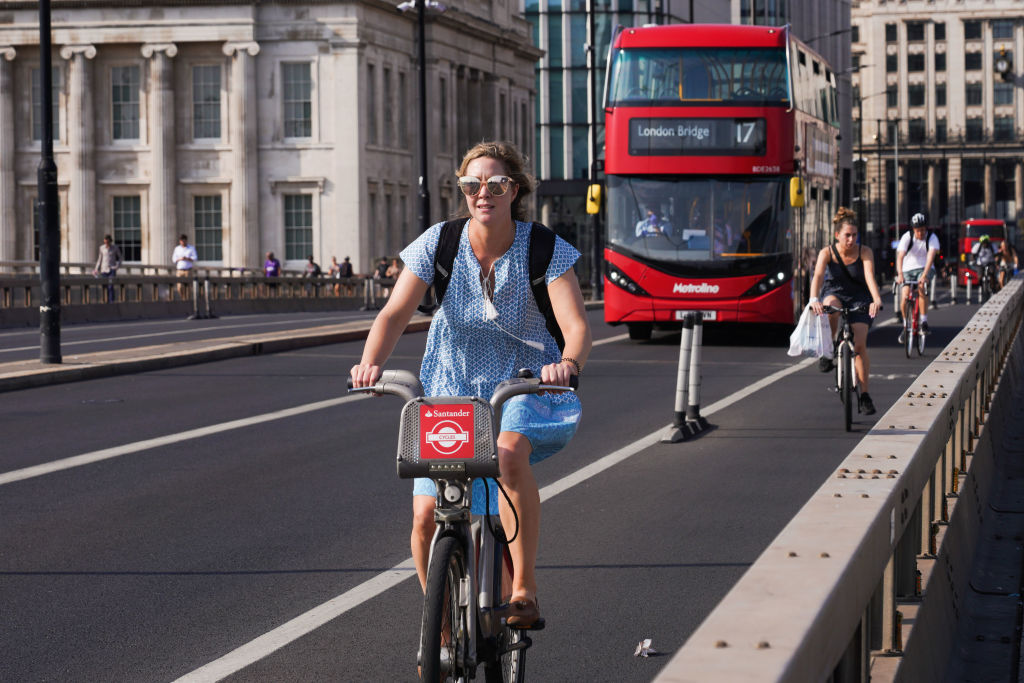Overcoming common barriers to cycling for women
How increased infrastructure and safer roads can lead to improved confidence and representation of women in cycling

Women cycling was revolutionary when the bicycle was first invented, changing the way they dressed, giving them more independence, and doing “more to emancipate [them] than any one thing in the world,” as the American civil rights activist Susan B Anthony said in 1896.
But today, considerably fewer women cycle than men. In the UK, for example, men on average, cycle two-and-a-half times more trips and four times as far as women.
In those intervening 100 years, it seems, barriers upon barriers have been laid down, preventing many women from taking up cycling. The most notable of these, as simple as it sounds, is a lack of cycling infrastructure and safe roads.
Six out of 10 women said they don’t feel confident riding their bike on the road, according to British Cycling, and this pattern is reflected worldwide except in countries where there are separate cycling lanes, such as the Netherlands, Germany and Denmark, women cycle as often as men.
Local councils in the UK are drawing inspiration from this model, creating their own segregated routes to encourage more people to cycle. In Birmingham, two flagship routes are now in operation with the aim of realizing a network of segregated routes and infrastructure, Councillor Liz Clements – the city’s Cabinet Member for Transport – explains.
“That’s obviously a big project, it will take us a long time, but that’s where we need to get to,” she says.
It is these new routes which have made the biggest difference in Clements’ own confidence as she cycles around the city.
The latest race content, interviews, features, reviews and expert buying guides, direct to your inbox!
“Until my early 30s, I cycled a lot,” she recalls, “and then I moved to Birmingham, and at that point, I did lose my confidence because some of the journeys I was trying to do on the main road were scary, there’s no other word for it.”
Women are underrepresented in the transport sector, making up 21% of workers despite accounting for 47% of the workforce in the UK, perhaps accounting for some of the gender bias in transport policymaking.
For disabled women, a lack of infrastructure only accentuates these difficulties, as barriers on paths can prevent them from accessing the bike routes.
“These access controls were put in to deter antisocial motorcycle use,” says Harrie Larrington-Spencer, a research fellow at the Active Travel Academy and inclusive cycling campaigner. “They fail to do this but do prevent legitimate users like myself from using nonstandard and adapted cycles, as well as other mobility aids like mobility scooters and wheelchairs.
“I also face problems with new cycle infrastructure too,” she adds. “For example, cycle lanes that are too narrow for my trike to fit in or cycle lanes with the camber that is too steep, which means I risk tipping over and injuring myself.”

Community groups, as well as local councils, are trying to improve road safety for cyclists. Cycle Sisters – a London-based organisation inspiring and enabling Muslim women to cycle – provides cycling instructing lessons and buddy programmes to help its members navigate roads more safely.
It is not just vehicles, however, that threaten the safety of female cyclists, who are almost twice as likely to be harassed while cycling, a 2015 study found. Though reducing harassment is not just limited to cycling, there are places to report these dangers for cyclists. Open data reporting websites such as BikeMaps.org collate cycling incidents around the world to identify hot spots of cycling safety, risk and crime, although this doesn’t solve the root cause of the problem.
All these barriers can amount to a lack of confidence for women when cycling, though the simple act of being on the road can go some way to restoring it.
“I think when we are on the road when we are visible and taking up space, as is our right, it sends a message to everyone that this is for you too,” Samra Said, Chair of Cycle Sisters, says.
“Confidence plays a big part, not seeing many women who look like yourself who are from a similar background…so representation does matter. We get stopped a lot of the time by residents who are just shocked to see us, they’re like: ‘Oh, I didn’t know this was happening, where can I sign up?.’
“We’ve created a space where Muslim women are skilled in their ability to ride, they’re also skilled in their ability to lead rides and becoming role models. We manage through that to tackle a lot of stereotypes.”
‘Where we need to get to is where cycling is just a routine method of transport’
A lack of confidence can manifest in social anxiety, too, given that women can be under pressure to look a certain way.
“It goes back probably hundreds of years for women, but they’re probably put off by how cyclists look,” Adna Dumitrescu, co-founder of the Edinburgh-based cycling group Queens of Pain says. “What you’re supposed to wear on a bike. Some friends of mine I’ve tried to get to come to rides, and one of them told me, ‘I don’t have any of the right gear.’”
This social pressure seems to be particularly visible for women when arriving at work, 20% of respondents said in a survey conducted by the City of Sydney. These concerns, they said, prevented them from cycling, given the impact it would have on their appearance, referencing unsuitable workwear and the lack of showers at their destination.

Combatting these assumptions is part of a wider societal issue, but within cycling, policy papers have recommended increasing the number of end-of-trip facilities in private and commercial offices, shopping centres and large institutions such as hospitals and universities.
A lack of storage space, particularly in cities, can also prevent women from ever buying a bike and, consequently, from cycling.
“For me, one of the big issues is secure bicycle parking,” Clements says. “At the moment, I keep it in my dining room. We’re looking at on-street cycle parking, but we need to move towards cycle hangers and a big program of cycle storage.”
Still more likely to be the primary caregiver in a family, women can have different requirements when cycling, particularly when using cycling as transport, multiple studies have found. With these responsibilities, they are more likely to pick up or drop off children, making safety more important, as well as making a standard bike a more difficult form of transport. Initiatives such as the Family Cycling Library allow cyclists to borrow child seats, trailers and other equipment to facilitate cycling as a family.
“Where we need to get to is something much more like the Dutch experience where cycling is just a routine method of transport because there are safe routes, people don’t feel they need an expensive or specialist bike or any specialist gear,” Clements says. “They can dress in whatever they want to wear to wherever destination they’re going to and cycle in comfort on a safe route.”
In elite cycling, too, barriers hindering women’s participation are breaking down. Organizations such as The Cyclists' Alliance (TCA) are advocating for all professional riders to earn a minimum salary, receive maternity leave and have their training expenses covered.
As well as improving working conditions for female professional cyclists, greater coverage of women’s cycling can help inspire more people to either become involved in the sport or simply ride their bikes more.
Cyclingnews created this content as part of a paid partnership with Rouvy. The contents of this article are entirely independent and solely reflect the editorial opinion of Cyclingnews.
Issy Ronald has just graduated from the London School of Economics where she studied for an undergraduate and masters degree in History and International Relations. Since doing an internship at Procycling magazine, she has written reports for races like the Tour of Britain, Bretagne Classic and World Championships, as well as news items, recaps of the general classification at the Grand Tours and some features for Cyclingnews. Away from cycling, she enjoys reading, attempting to bake, going to the theatre and watching a probably unhealthy amount of live sport.
